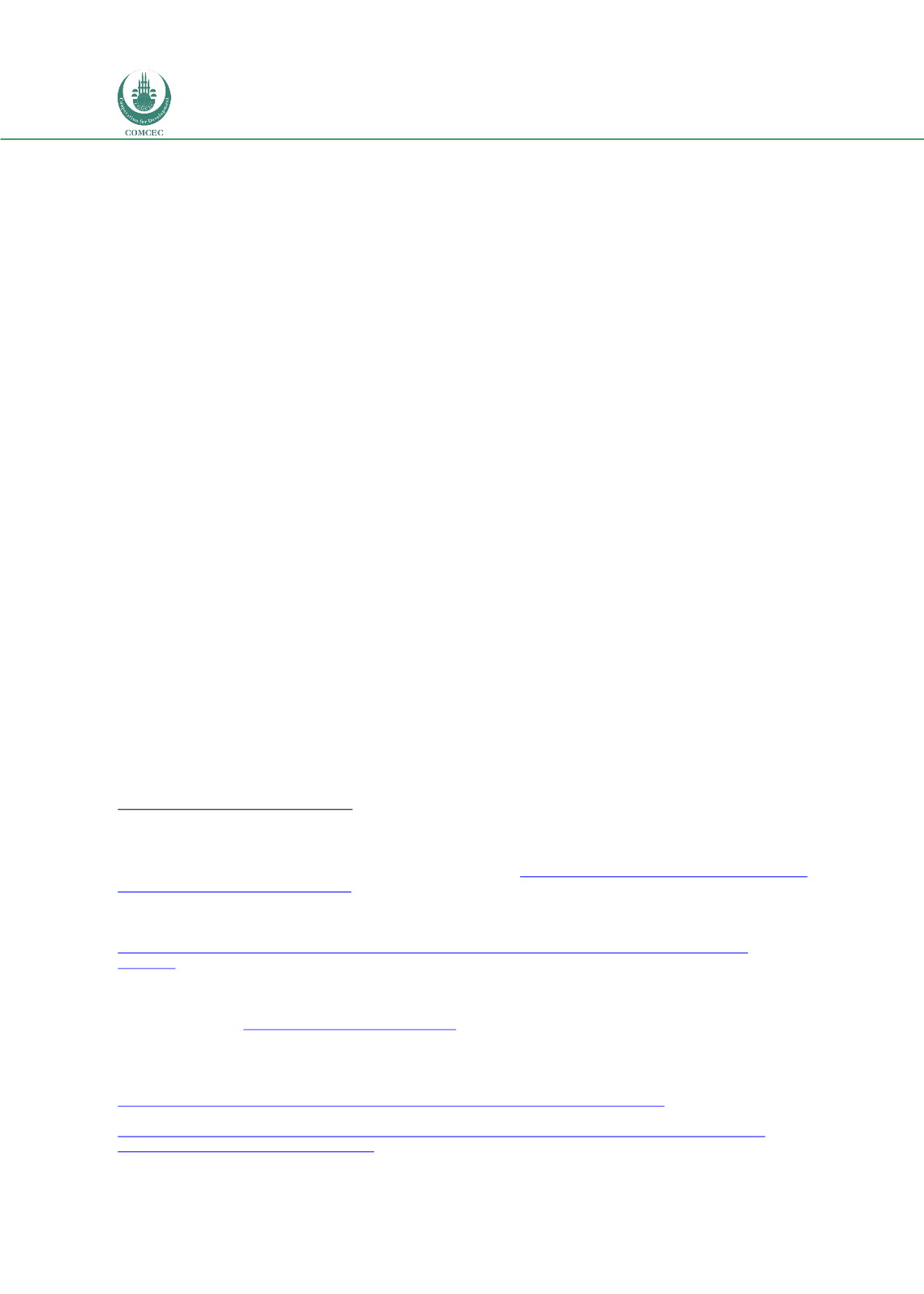

Forced Migration in the OIC Member Countries:
Policy Framework Adopted by Host Countries
48
voluntary repatriation—remains slim. In a 2013 survey of 360 Somali refugees in Kenyan and
Ethiopian camps, less than a third (31 percent) responded that they intended to return to
Somalia in the future.
177
The other two durable solutions, resettlement and local integration, each face their own
obstacles. In the same survey referenced above, 49 percent of respondents hoped to be
resettled to a third country. But this route is not an option for most refugees. Despite the
status of Somali refugees in Kenya as a “priority situation” for resettlement, there were only
7,616 departures between 2012 and 2014 – far short of the actual need as over 400,000
Somali refugees remained in Kenya in 2015.
178
Local integration has been difficult due to
reluctance from countries of asylum to grant refugees certain rights set out by the 1951
Convention, such as freedom of movement and the right to work.
179
This reluctance stems
from many factors, namely strained resources that are already limited for hosting countries’
own populations.
But as refugee situations become protracted for longer periods of time, this “care and
maintenance” model has proven problematic. Uganda stands out as a country that has taken
concrete steps to provide more durable solutions for refugees, working to provide refugees
with freedom of movement and livelihood opportunities.
180
In the region’s other major
hosting countries though, protection frameworks tend to perpetuate the care and
maintenance model. While national governments, international organizations, and NGOs have
begun creating programs to address this issue by facilitating integration and access to
livelihoods, these efforts remain small-scale.
181
Meanwhile, national governments’ willingness
to host large refugee populations ad infinitum has waned. In May 2016, Kenya sparked
international concern when it announced that it would close Dadaab, the world’s largest
refugee camp, due to concerns over Al Shabaab’s purported use of the camp to perpetrate
terrorist plots, diminishing international aid, and the lack of present solutions to the
177
Somali refugees cited many different pre-conditions for return, though the most common responses were long-lasting
security and safety, access to education, and livelihood opportunities. Danish Refugee Council and Norwegian Refugee
Council,
Durable Solutions: Perspectives of Somali Refugees Living in Kenyan and Ethiopian Camps and Selected Communities
of Return
(Copenhagen: Danish Refugee Council, 2013), 35-36,
https://drc.dk/media/1311894/durable-solutions- perspectives-of-somali-refugees-2013.pdf .178
This trend has continued in 2016. While the projected resettlement need for the East and Horn of Africa was 225,724
persons, UNHCR only planned to submit 26,098 for resettlement – of which an even smaller number will actually depart for
third country destinations. UNHCR,
UNHCR Projected Global Resettlement Needs 2016
(Geneva: UNHCR, 2015), 24, 54,
http://www.unhcr.org/en-us/protection/resettlement/558019729/unhcr-projected-global-resettlement-needs- 2016.html .179
One exception to this is Eritrean refugees in Ethiopia, who have the right to live outside of refugee camps if they are self-
sufficient or have other forms of support in the country. Durable Solutions: Perspectives of Somali Refugees Living in
Kenyan and Ethiopian Camps and Selected Communities of Return, p. 25. UNHCR,
UNHCR Global Report 2010
, (Geneva:
UNHCR, 2011), 85-90
, http://www.unhcr.org/4dfdbf494.pdf .180
A discussion of the Ugandan case can be found in Chapter 3.
181
Further reviews of durable solutions initiatives in the Horn of Africa can be found in Samuel Hall,
Review of Durable
Solutions Initiatives in East and Horn of Africa: Good practices, challenges and opportunities in the search of durable solution
(Nairobi:
Regional
Durable
Solutions
Secretariat
and
Danish
Refugee
Council,
2016),
http://reliefweb.int/sites/reliefweb.int/files/resources/ReDSS%20SH%20Report%20---Final.pdf ;and The World Bank
and UNHCR,
Forced Displacement and Mixed Migration in the Horn of Africa
(Washington, DC: The World Bank, 2015), 41-49,
http://documents.worldbank.org/curated/en/837351468189856365/pdf/ACS14361-ESW-P152459-Box391494B- PUBLIC-FINAL-HOA-Displacement-Report.pdf .















